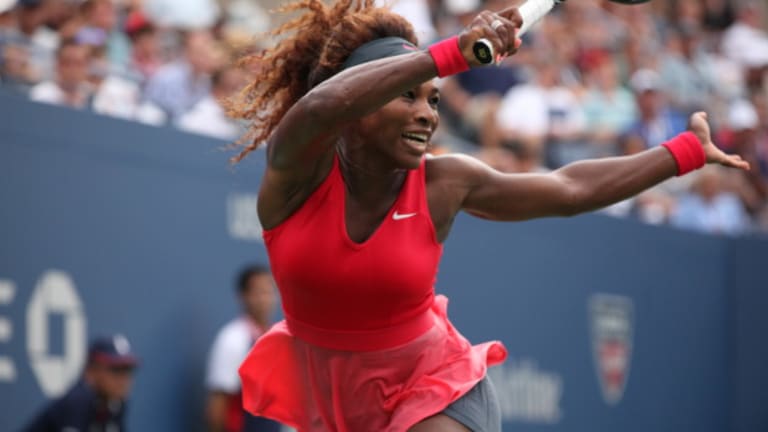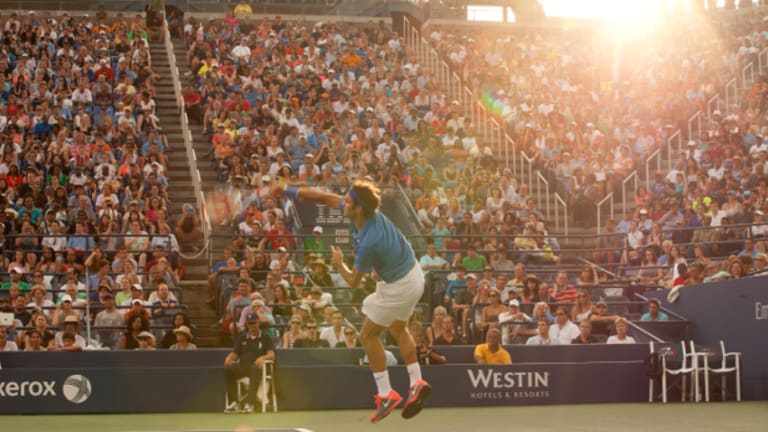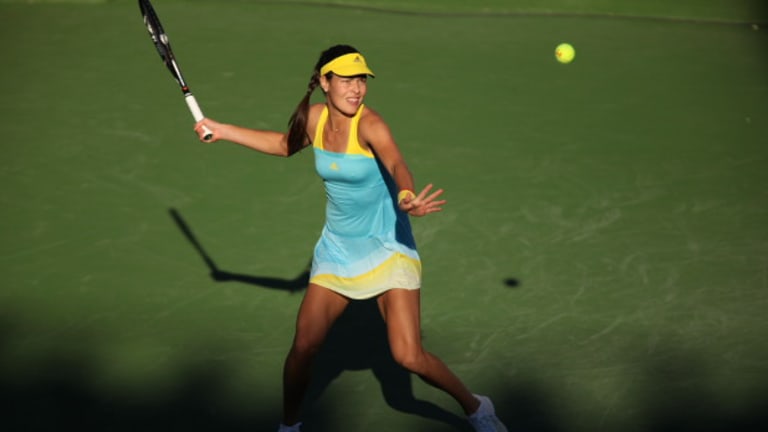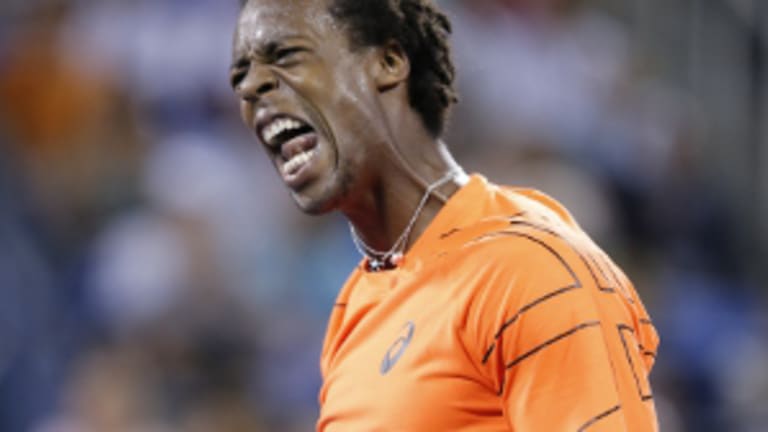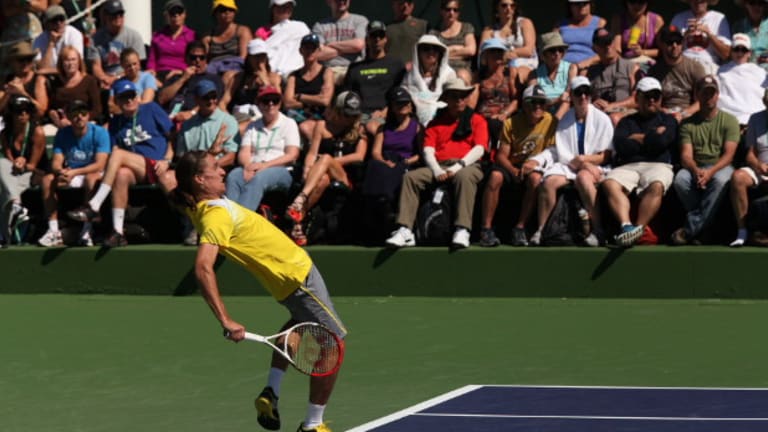Andy Murray
“I never want to leave the photographer’s pit when he’s playing, because there’s always something to shoot with him. You have to be on your toes; he can get agitated and volatile at any time, and give you a lot of emotion. It makes him fun to shoot, but also a sympathetic figure to me, in a way. He also does things really quickly; even when your camera is trained on him, it might not be fast enough to catch what he does. A French photographer and I were both shooting Murray when he suddenly stuck his racquet in his mouth and bit it. The other photographer looked down at his camera and went, “Oh la la.” He had the shot. I looked down at mine and saw that I’d missed it.
“When he plays, I like to see Murray in shadow. He’s a very muscular guy, and can look like Roman statue. You can appreciate that form in the shadows he throws.”
Maria Kirilenko
“I love her. When I'm feeling a little anxious, wondering if I’ll get a good shot that day, I go to her matches. She will give you something beautiful to capture and inspire you for the rest of the day. Her physique is incredible, she has impeccable form, perfect posture—I imagine she might have been a great gymnast. She creates great lines. Also, everything she does is very ladylike, even the way sits on the sidelines, powders her arms.”
Juan Martin del Potro
“I wasn’t a big fan of his until I watched him on a side court at the French Open and could hear him hit the ball—I couldn’t believe he ever lost. Also, I hadn’t properly appreciated the emotional side of him. What I’ve noticed since then is how he relates to the crowd; there’s a theatrical side to him and a feeling for drama. He holds his poses for a long time, which is great for photographers. After he wins a game, he’ll walk for a long time with his arm raised, or he’ll pull his shirt over his head and keep it there as he walks, kind of like a little kid. It might last for 10 frames. He knows how to work it.”
Ana Ivanovic
“You rarely take a bad picture of her, even though she doesn’t always have the greatest form—the way she rounds her shoulders, hunches a bit… What you notice is the vulnerability in her eyes when she’s playing.”
